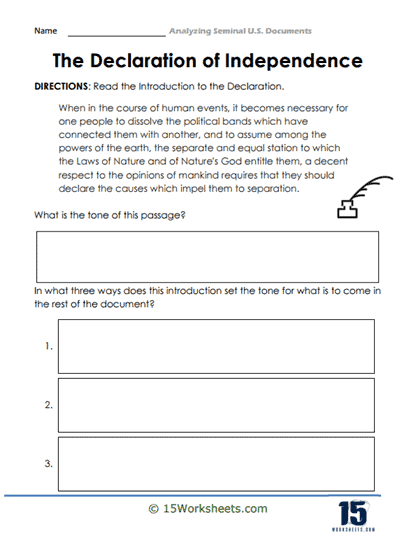Introduction to the Declaration

Worksheet Description
The introduction of the Declaration of Independence, often referred to as the Preamble, sets the tone for the rest of the document in several significant ways:
Asserting a Universal Principle – By stating that “all men are created equal” and are endowed with “certain unalienable Rights,” the introduction establishes a foundation based on universal truths and principles. This sets the tone for a document that is not just about the specific grievances of the American colonies, but one that speaks to broader ideals that are applicable to all of humanity.
Legitimizing the Break from Britain – The introduction emphasizes the necessity for a people to explain their reasons when separating from another political body – “a decent respect to the opinions of mankind requires that they should declare the causes which impel them to the separation.” This prepares the reader for the forthcoming list of specific grievances against King George III and the British Parliament. It conveys that this isn’t a rash decision but a considered action for which they are providing clear reasons.
Establishing the Gravity and Solemnity of the Act – The tone of the Preamble is formal and serious, underscoring the gravity of what the Continental Congress is about to undertake. This is not a light or impulsive action but a momentous decision taken with great consideration and understanding of its implications. This solemn tone ensures that the reader, including the international community, understands the serious nature of the colonies’ intentions.
Overall, the introduction effectively sets the stage for the detailed grievances and the formal declaration of separation that follow, all while grounding the document in universal principles and ideals.
